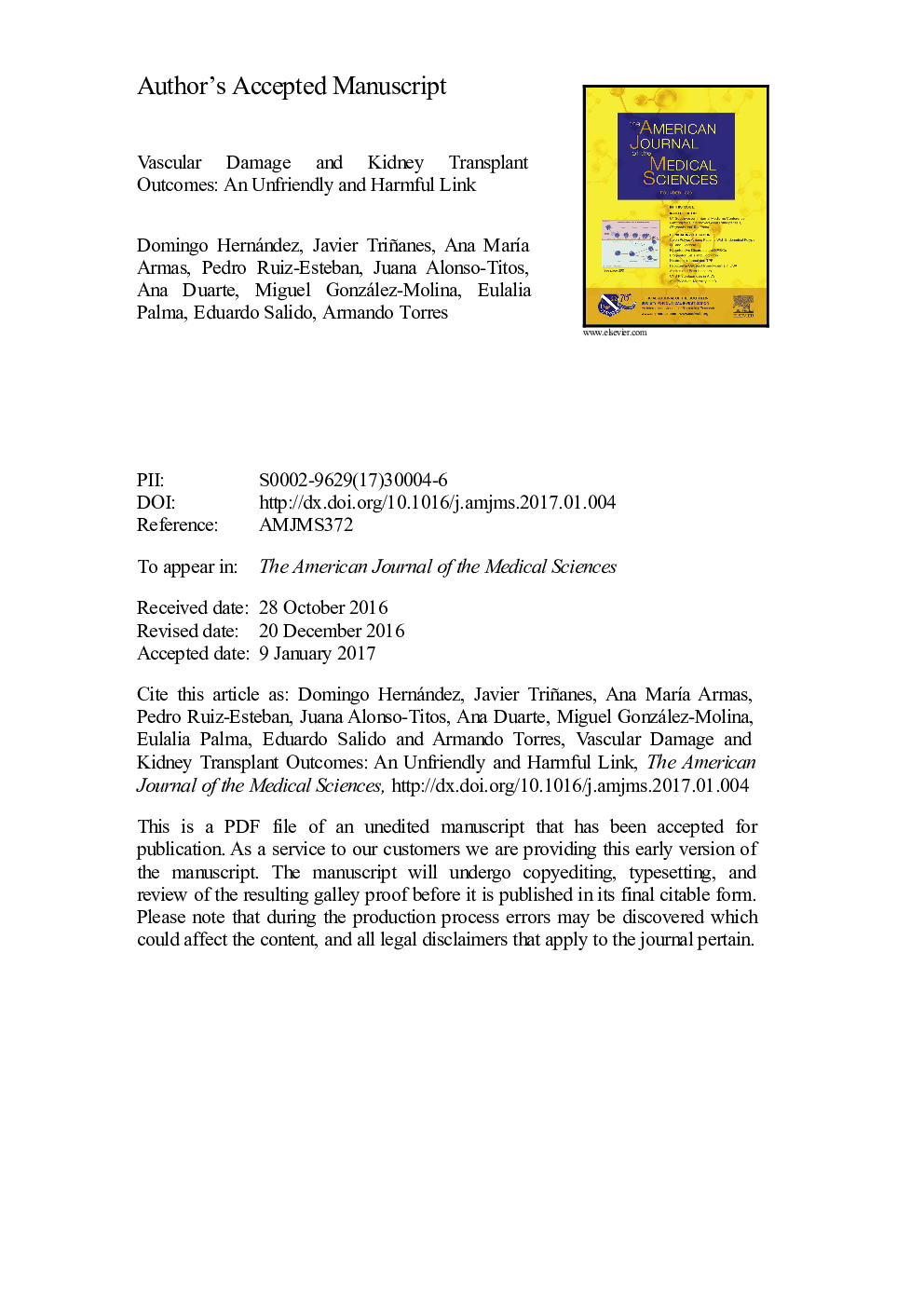| Article ID | Journal | Published Year | Pages | File Type |
|---|---|---|---|---|
| 5595715 | The American Journal of the Medical Sciences | 2017 | 39 Pages |
Abstract
Kidney transplant (KT) is the treatment of choice for most patients with chronic kidney disease, but this has a high cardiovascular mortality due to traditional and nontraditional risk factors, including vascular calcification. Inflammation could precede the appearance of artery wall lesions, leading to arteriosclerosis and clinical and subclinical atherosclerosis in these patients. Additionally, mineral metabolism disorders and activation of the renin-angiotensin system could contribute to this vascular damage. Thus, understanding the vascular lesions that occur in KT recipients and the pathogenic mechanisms involved in their development could be crucial to optimize the therapeutic management and outcomes in survival of this population. This review focuses on the following issues: (1) epidemiological data framing the problem; (2) atheromatosis in KT patients: subclinical and clinical atheromatosis, involving ischemic heart disease, congestive heart failure, stroke and peripheral vascular disease; (3) arteriosclerosis and vascular calcifications; and (4) potential pathogenic mechanisms and their therapeutic targets.
Related Topics
Health Sciences
Medicine and Dentistry
Cardiology and Cardiovascular Medicine
Authors
Domingo MD, PhD, Javier PhD, Ana MarÃa MD, Pedro PhD, Juana MD, Ana MD, Miguel MD, PhD, Eulalia MSc, Eduardo MD, PhD, Armando MD, PhD,
